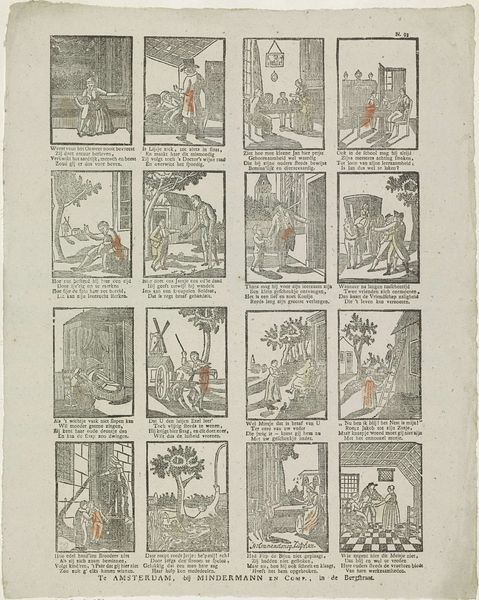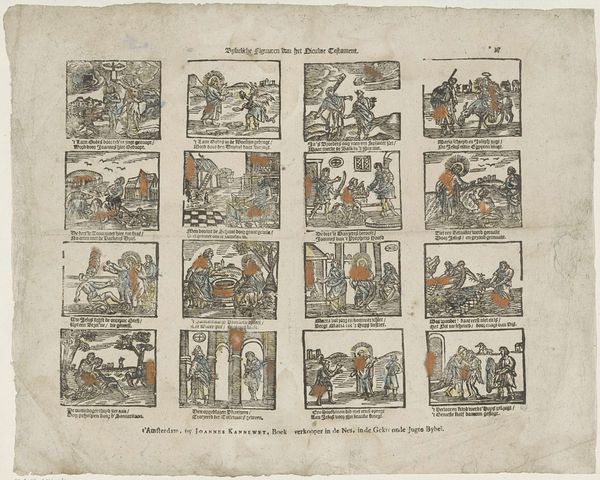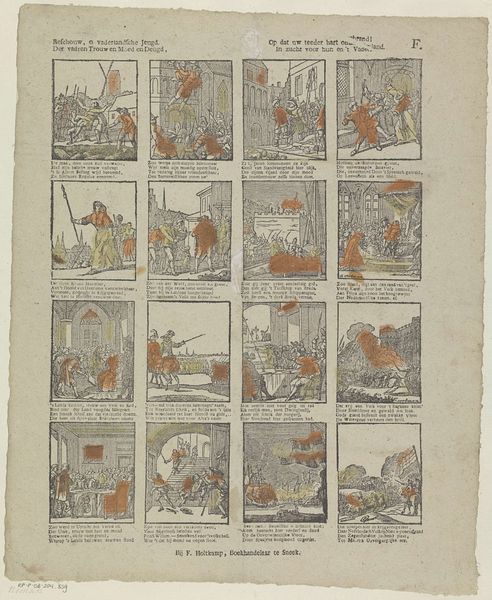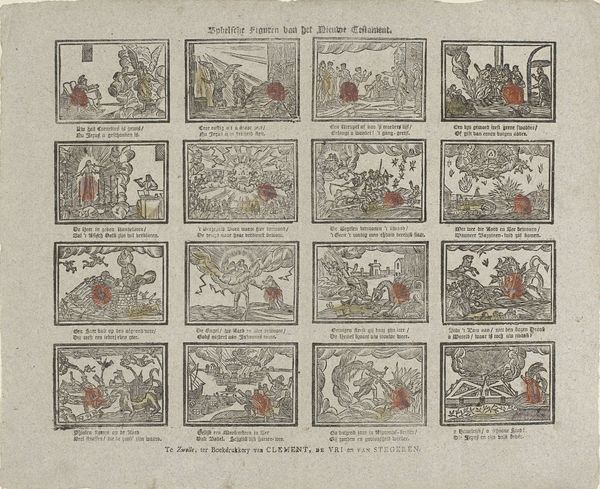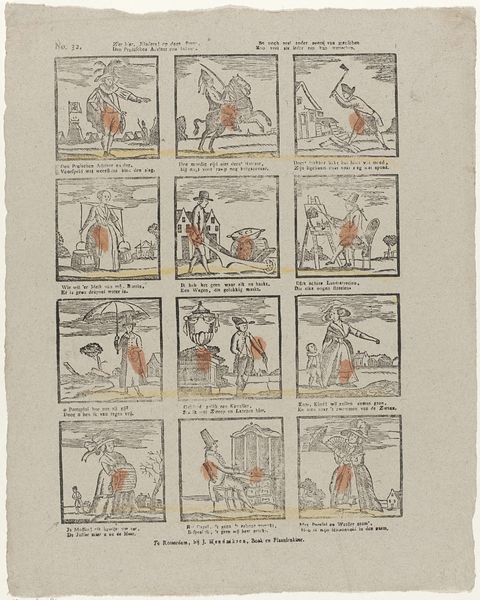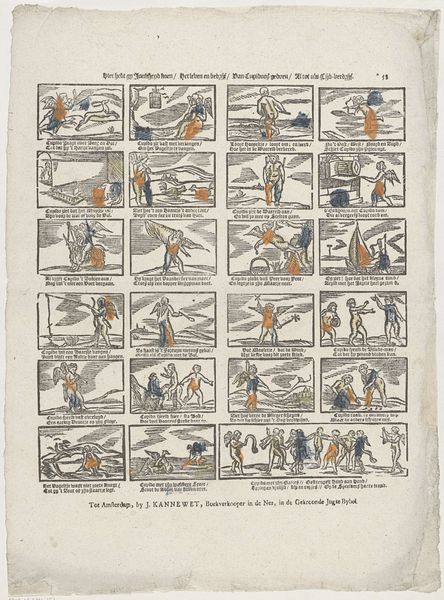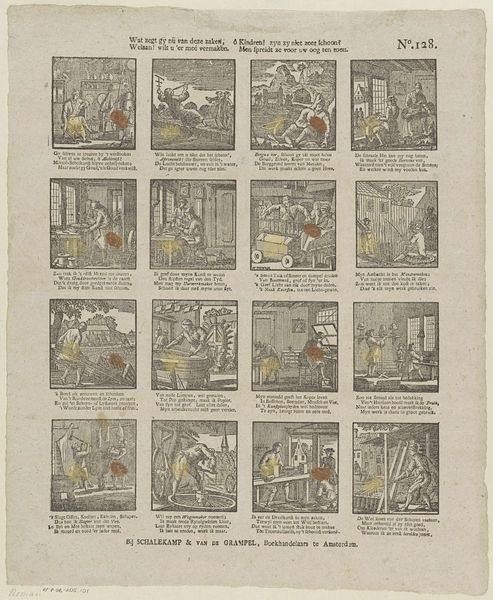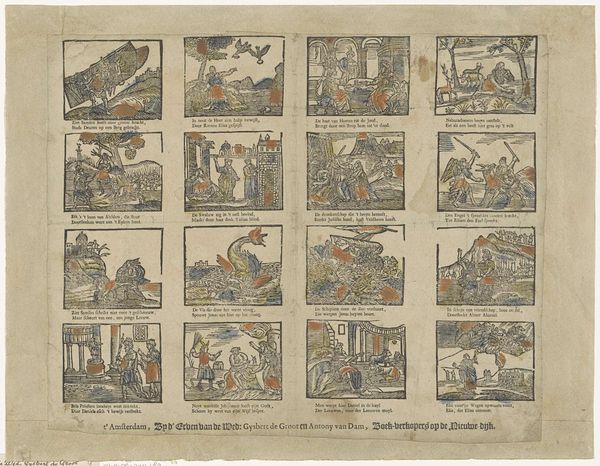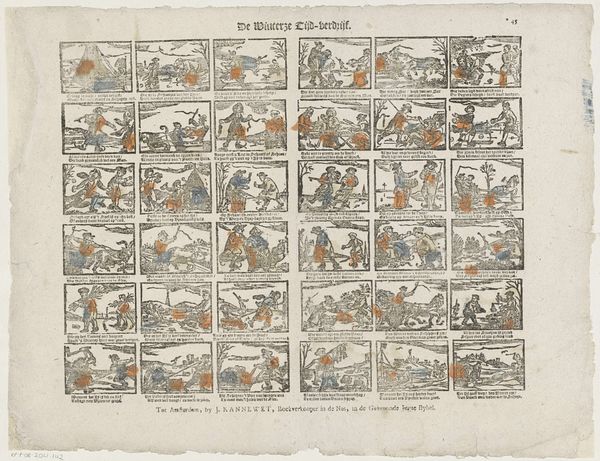
mixed-media, print, engraving
#
mixed-media
#
narrative-art
#
baroque
#
dutch-golden-age
# print
#
figuration
#
history-painting
#
engraving
Dimensions: height 308 mm, width 415 mm
Copyright: Rijks Museum: Open Domain
This is “Bybelsche figuuren van het Oude Testament,” made by Johannes Kannewet in Amsterdam. As you can see, it’s a printed page, an arrangement of sixteen small scenes from the Old Testament. What I find compelling about this image is its relationship to mass production and consumption. Woodcut printing was one of the earliest forms of reproducible imagery, which meant that knowledge and stories could be disseminated among a wide audience. Look closely at the image: the thick, expressive lines are carved into a block of wood, and then inked and pressed onto paper. It is through this simple, yet laborious process that images like these became accessible to the masses. The texture, weight, and form all speak to the social and cultural significance of the artwork. By considering the labor and skill involved in the production process, we can understand how this humble print democratized access to visual storytelling. It is an accessible artwork, tied to wider social issues of labor, politics, and consumption.
Comments
No comments
Be the first to comment and join the conversation on the ultimate creative platform.


